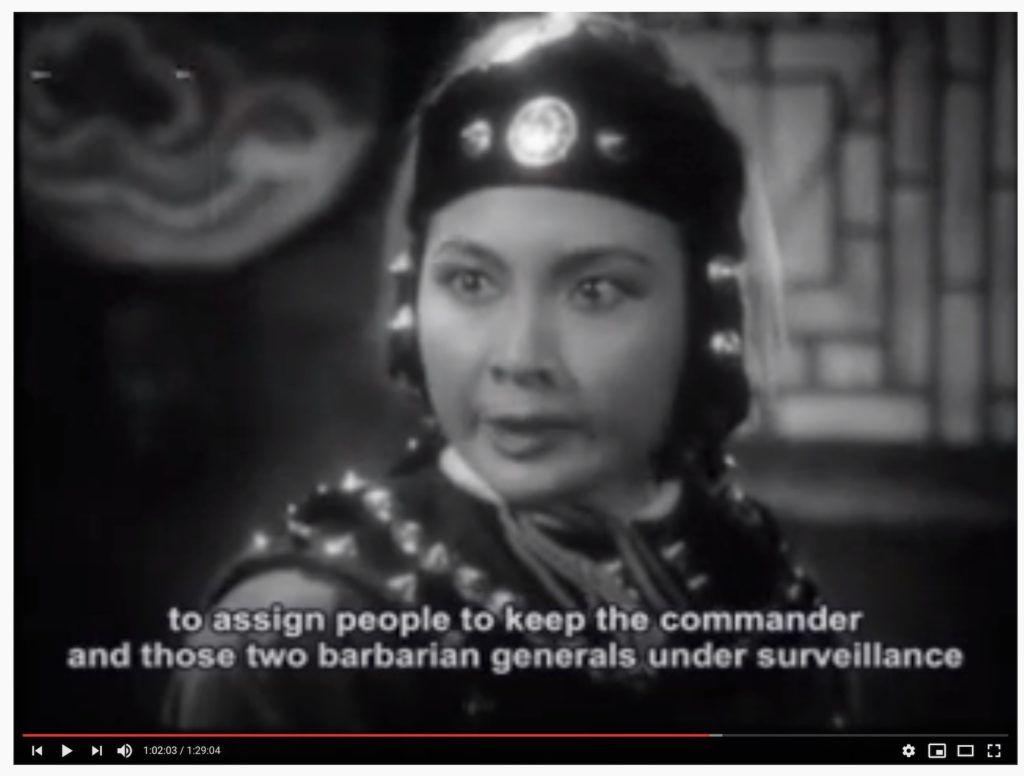UBC prof translates earliest surviving live-action Mulan film
UBC Asian studies professor Christopher Rea, who recently translated the earliest surviving Mulan film, Hua Mu Lan (1939), talks about why Mulan remains a significant cultural icon.

Screenshot from the 2020 live action version of Mulan. Credit: Walt Disney Studios
Mulan, a live-action rendition of the Disney animated classic, premieres this Friday, Sept. 4. This highly anticipated film retells the legend of Chinese heroine Hua Mulan, a story that has been appearing on the silver screen for almost a hundred years. In this Q&A, UBC Asian studies professor Christopher Rea, who recently translated the earliest surviving Mulan film, Hua Mu Lan (1939), talks about why Mulan remains a powerful cultural icon.
What is the cultural significance of Mulan?
The legend of Mulan dates back to the 12th century, and possibly the sixth. While there is no evidence of a historical Mulan, she has been an evergreen figure in Chinese literature and folklore. The novelty appeal of a woman dressing up as a man and going to war has captured audiences for centuries. Among Chinese legends, Mulan is a rarity because she is not a supernatural being and possesses no magical powers. It is the mundane nature of her transformation – a change of clothes – that makes the Mulan legend feel close to real life. Audiences have appreciated that what Mulan does could really happen.

Mulan’s story has been adapted and interpreted in different ways. She’s a filial daughter, a loyal imperial subject, a patriot, an empowered woman, a cross-dresser who reveals the instability of gender categories, the epitome of the Confucian martial-cultural ideal—we project our hopes and desires onto her. As a cultural icon, Mulan inspires both fascination and ambivalence in part because she’s so malleable.
You recently translated Hua Mu Lan, the 1939 live-action adaptation of this story. What is the value of this adaptation? Where can we see the film?
This film is important historically as it was made in Shanghai during the third year of China’s war against Japan. It’s also a crossover work in several senses. It’s a genre mash-up, with songs, slapstick comedy and romance. It was a box office hit across war-torn Asia, from Shanghai to occupied Nanking, colonial Singapore and Japan. And its star, Nancy Chan, was a Cantonese actress in her first Mandarin role.
Among Chinese audiences, the film was mostly received as a resistance film since it portrays Mulan fighting off invaders, but not entirely. In Chungking, copies of the film were burned by agitators who called the filmmakers traitors for allowing the film undergo Japanese censorship in return for access to film stock and markets in occupied territories. Controversy notwithstanding, its commercial success helped to usher in the age of the wartime costume drama.
This film is part of my ongoing Chinese Film Classics initiative, which includes a book, a website, an online course, and English-subtitled versions of numerous classic Chinese films that I have created with my PhD students and uploaded to YouTube for public use.



What is the genesis of your larger Chinese film classics project?
I’ve been teaching Chinese cinema for more than a decade now, and found that English subtitles for older films are usually incorrect, incomplete, or just non-existent. For example, sometimes only the dialogue is translated but not the songs or the words you see onscreen, like the credits or shop signs. The pandemic actually accelerated my plans to produce my own translations, which try to capture everything.
I’m also building a website, chinesefilmclassics.org, which will eventually be an open-access resource on Chinese cinema history for researchers, educators, students, film fans and anyone curious about Chinese culture. The core of the website will be a full online course on Chinese film classics, comprised of the films and video lectures I produced with funding from the Dean of Arts office.
To date, I’ve published 17 subtitled films dating back to 1922. The response has been great – the films have received thousands of views on YouTube in only a couple months. You can watch all of the translated films, including Hua Mu Lan, on the Chinese Film Classics playlist. More films and video lectures are coming soon – for updates, subscribe to the Modern Chinese Cultural Studies YouTube channel.



